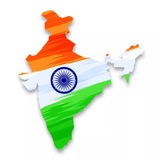Varadharaja Perumal Temple, Poonamallee.
History of the temple - This temple was built in the 10th century during the Chola Period. It is the birth place of Thirukachi Nambi, the guru of Ramanujar. Legend has it that Nambi used to walk till Kanchipuram everyday and offer flowers to Varadaraja Perumal. When Nambi fell sick, Perumal himself came to Poonamallee and graced him with his presence. The place came to be known as Poovirunthamalli after the goddess Pooviruntha Thayar.
History of the temple - This temple was built in the 10th century during the Chola Period. It is the birth place of Thirukachi Nambi, the guru of Ramanujar. Legend has it that Nambi used to walk till Kanchipuram everyday and offer flowers to Varadaraja Perumal. When Nambi fell sick, Perumal himself came to Poonamallee and graced him with his presence. The place came to be known as Poovirunthamalli after the goddess Pooviruntha Thayar.
Stories of a Bygone Era.
This is the chariot wheel of the sun temple in Konark, Orissa. This is a unesco world heritage sight.
Did you know that these wheels were used as sun dials in the ancient times?
You can see that the wheel has 8 wider spokes and 8 thinner spokes. The distance between 2 wider spokes is of 3 hours and those between a wider spoke and thinner spoke is 1.5 hours. There are 30 beads between the wider and next thinner spoke where each bead represents 3 minutes. The sun dial shows time in anti clockwise and top center wider spoke represents 12 am.
Isn't that interesting?
This is the chariot wheel of the sun temple in Konark, Orissa. This is a unesco world heritage sight.
Did you know that these wheels were used as sun dials in the ancient times?
You can see that the wheel has 8 wider spokes and 8 thinner spokes. The distance between 2 wider spokes is of 3 hours and those between a wider spoke and thinner spoke is 1.5 hours. There are 30 beads between the wider and next thinner spoke where each bead represents 3 minutes. The sun dial shows time in anti clockwise and top center wider spoke represents 12 am.
Isn't that interesting?
Lahori gate , lal quila (quila-e-mubarak)
When Shahjahan constructed the Red fort(1639-1648) , this western gate ,which serves as the main entrance to the fort , was clearly visible if one stood in the centre of chandni chowk road.
Later the gate was provided with a 10.5 high metre barbican by Aurangzeb(1658-1707)after he became emperor, with its entrance to the north. It is said that Shah Jahan, while under house arrest, wrote to Aurangzeb and criticized his decision: "You have made a fort a bride, and set a veil on it."
When Shahjahan constructed the Red fort(1639-1648) , this western gate ,which serves as the main entrance to the fort , was clearly visible if one stood in the centre of chandni chowk road.
Later the gate was provided with a 10.5 high metre barbican by Aurangzeb(1658-1707)after he became emperor, with its entrance to the north. It is said that Shah Jahan, while under house arrest, wrote to Aurangzeb and criticized his decision: "You have made a fort a bride, and set a veil on it."
Shivanasamudra which popularly known as Bluff is an island town formed from Cauvery River. It divides the river into twin Waterfalls.
The eastern branch of waterfall is called Barachukki (Chamarajanagar district) and western branch is known as Gaganachukki (Mandya District). Both waterfalls together known as Shivanasamudra Falls. It is located 65 km east of Mysore and 120km from Bangalore. Shivasamudra is also known for hosting Asia’s first hydroelectric project. Every year Karnataka government organises famous Jalapathotsava (festival of waterfalls)here.
The eastern branch of waterfall is called Barachukki (Chamarajanagar district) and western branch is known as Gaganachukki (Mandya District). Both waterfalls together known as Shivanasamudra Falls. It is located 65 km east of Mysore and 120km from Bangalore. Shivasamudra is also known for hosting Asia’s first hydroelectric project. Every year Karnataka government organises famous Jalapathotsava (festival of waterfalls)here.
Kapileswara Swamy Temple also known as kapila Theertham is a Hindu Temple dedicated to Lord Shiva located at Tirupati in the Chittoor District of Andhra Pradesh. Presiding Deity is called as Kapileswara Swamy and Mother is called as Kamakshi Amman. Kapila Theertham and the Temple is the only Shiva temple in the vicinity of Tirupati. It is also said to be one of the 108 sacred teerthas (springs) on Tirumala hills. The Temple is considered as Thevara Vaippu Sthalam as Devaram Hymns had a mention about this Temple.
The idol is believed to be installed by Kapila Muni and hence Lord Siva here is referred to as Kapileswara. The Temple and Theertham had derived its name from Kapila Muni.
The idol is believed to be installed by Kapila Muni and hence Lord Siva here is referred to as Kapileswara. The Temple and Theertham had derived its name from Kapila Muni.
The Sri Sita Ramachandraswamy temple is a South Indian Hindu temple dedicated to Rama, the seventh incarnation of the god Vishnu. It is located on the shores of the Godavari River in the town of Bhadrachalam, a part of the Bhadradri Kothagudem district in Telangana state. Often simply referred to as Bhadrachalam or Bhadradri, the temple is considered one of the Divya Kshetrams of Godavari and is also referred as Dakshina Ayodhya. According to the legend, Vishnu appeared to Meru's son Bhadra as Rama to answer the latter's prayers. However, Vishnu forgot that Rama was a mortal human and appeared as Vaikuntha Rama with four hands. Sita and Lakshmana form part of the temple's moolavar.
